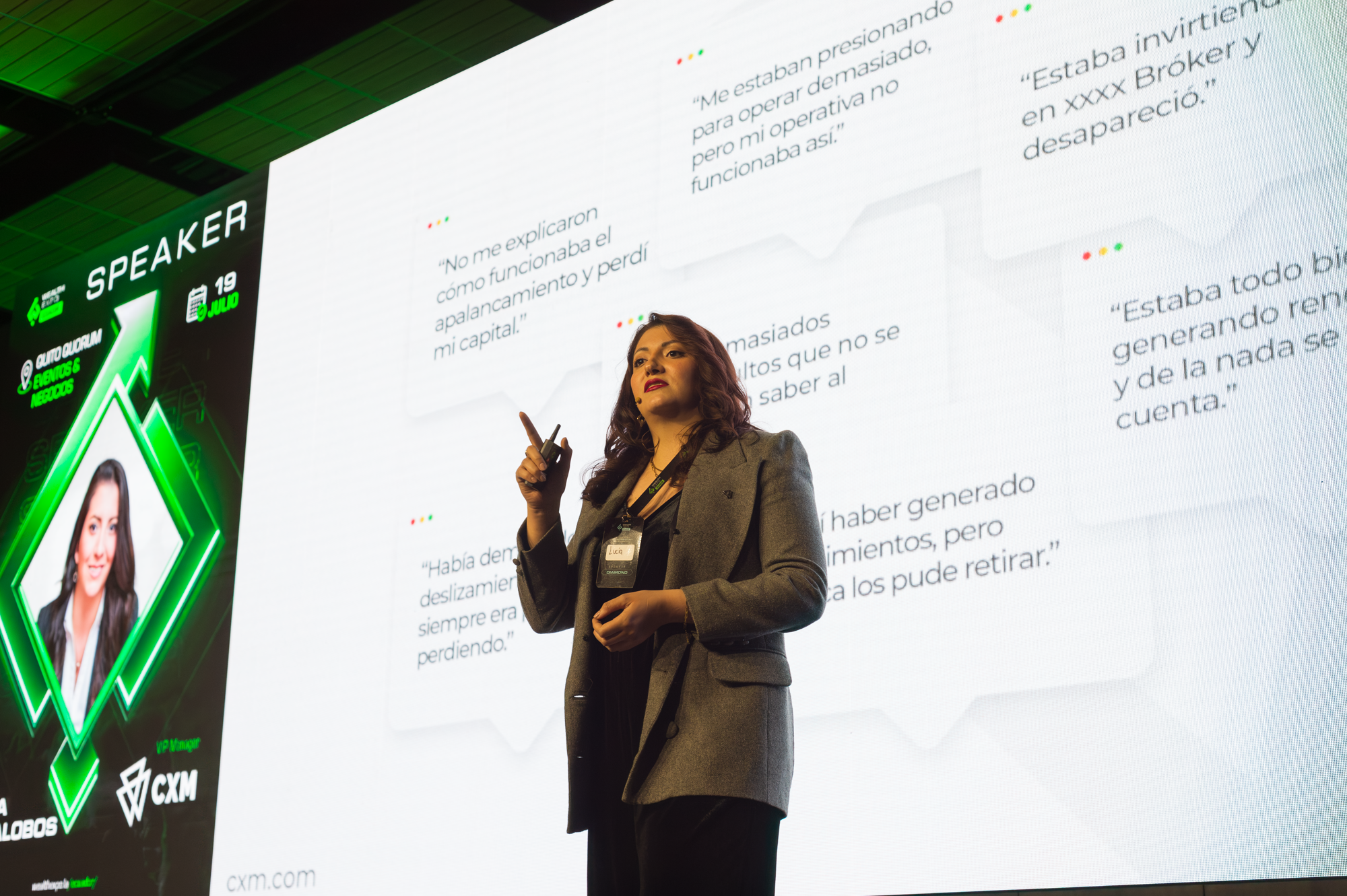At Wealth Expo Ecuador 2025, Lucía Villalobos, VIP Manager at CXM, addressed a topic that, in her words, “can make the difference between growing as an investor or sinking in the attempt.”
Before thinking about strategies or trading skills, she insisted that the essential step is choosing the right financial partner. A solvent, transparent, and well-regulated broker reduces structural risks and ensures that the only risk lies in the trade itself, never in the platform.
Certifications and Registration: The First Line of Defense
Regulation and certifications go hand in hand, but not all carry the same weight. Some seals can be obtained by simply paying a fee, while others -such as the CFA or licenses issued by reputable jurisdictions (United Kingdom, United States, Australia)- require audits, training, and strict controls.
A trustworthy broker must:
-Be registered in a country with a solid legal framework.
-Display its active and verifiable license on the website.
-Provide the registration number so it can be checked in just a few clicks.
If the entity is registered in an exotic jurisdiction that is difficult to audit, or if the license is not visible, it is as big a red flag as a giant red candle on the chart.

Liquidity Providers: The Real Pulse of the Market
The second filter is liquidity providers. Villalobos recommended demanding, at minimum, AAA institutions that ensure competitive spreads, low swaps, and stable execution even during periods of high volatility.
When a broker works with several global banks—instead of “internal liquidity” or a single opaque provider—investors gain transparency and protection against failures or manipulation. If a broker’s website hides the names of its liquidity providers or lists only one source, the warning light flashes red again.
Book A vs. Book B: Understanding the Execution Model
Here we encounter the choice between Market Maker (Book B) and B2B or STP/ECN (Book A). A Book B broker often acts as the direct counterparty: if the client wins, the broker loses, and vice versa. This does not automatically imply fraud, but it does create an inherent conflict of interest.
By contrast, a Book A broker routes orders to the interbank market. It earns from commissions or spreads, which means it profits when you profit, without needing to “balance” its risk against yours. The absence of tools to review market depth or a refusal to show the execution route are, once again, warning signs.

What Should I Remember When Choosing My Financial Partner?
-Verify licenses and regulation in countries with recognized financial authorities.
-Demand transparency about liquidity providers and cost structure.
-Ask about the execution model: if a broker claims to be Book A, it should prove it with routing reports and market depth visibility.
“Having the right financial partner is not a luxury, it’s a strategy,” concluded Lucía Villalobos. Choosing wisely today means trading tomorrow with confidence, knowing that while the market is volatile, your platform won’t be.



